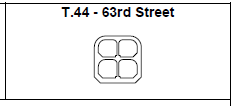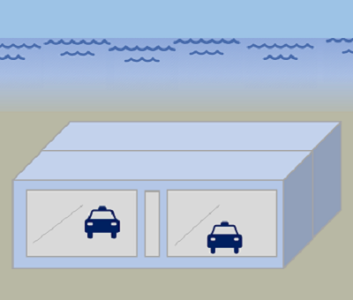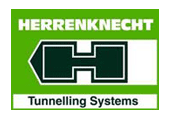63rd Street Tunnel
TOTAL IMMERSED LENGTH: Two tunnels, each 229 m long
DEPTH AT BOTTOM OF STRUCTURE: 30 m
HEIGHT: 11.2 m
WIDTH: 11.7 m
ENVIRONMENTAL CONDITIONS: Very swift current of 2.7 m/s (5.2 knots)
FABRICATION METHOD: RIverside shipyard at Port Deposit, Maryland; uncontrolled side-launch.
DEPTH AT BOTTOM OF STRUCTURE: 30 m
HEIGHT: 11.2 m
WIDTH: 11.7 m
ENVIRONMENTAL CONDITIONS: Very swift current of 2.7 m/s (5.2 knots)
FABRICATION METHOD: RIverside shipyard at Port Deposit, Maryland; uncontrolled side-launch.
New York City, New York,
United States

Metropolitan Transportation Authority and the New York City Transit Authority
Joint Venture: Kiewit-Slattery-Morrison Knudsen
Parsons Brinckerhoff Quade & Douglas Inc
114.3m
Two tunnels, each 229 m long
30m
Project construction
1973-04-30
4
Four tubes; one track in each. Two NYC transit tracks over two Long Island Railroad tracks.
11.2m
11.7m
Only two-over-two tunnel ever constructed. Actually two separate tunnels: one section
between New York City and Welfare Island, and the other between Welfare Island and
Brooklyn. The ends of each tunnel section were tremied into slots blasted into the rock
shores. Once in place, the four ends of the two tunnels were accessed by mining to
them. Tunnel was constructed in very strong current conditions.
between New York City and Welfare Island, and the other between Welfare Island and
Brooklyn. The ends of each tunnel section were tremied into slots blasted into the rock
shores. Once in place, the four ends of the two tunnels were accessed by mining to
them. Tunnel was constructed in very strong current conditions.
RIverside shipyard at Port Deposit, Maryland;
uncontrolled side-launch.
uncontrolled side-launch.
At dockside in Norfolk,
Virginia, and towed to New
York with full draft
Virginia, and towed to New
York with full draft
Very swift current of 2.7 m/s (5.2 knots)
Placed from straddling catamaran barges.
Tremie concrete joints
Continuous steel shell; cathodic protection
Screeded foundation consisting of large (15 cm) stone was used due to high current
velocities in the East River.
velocities in the East River.
1.3 m riprap over 9 m of crushed stone














